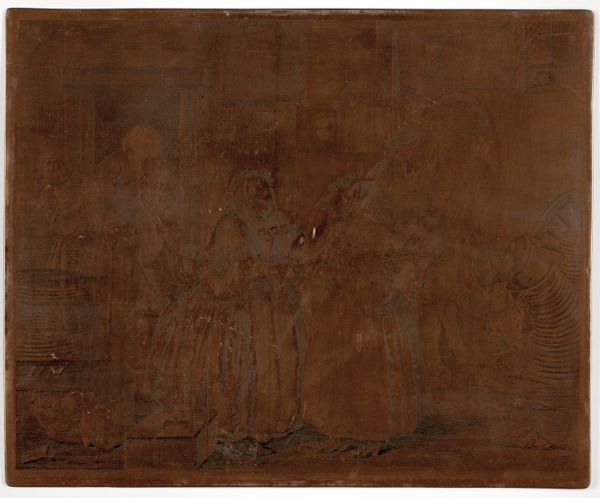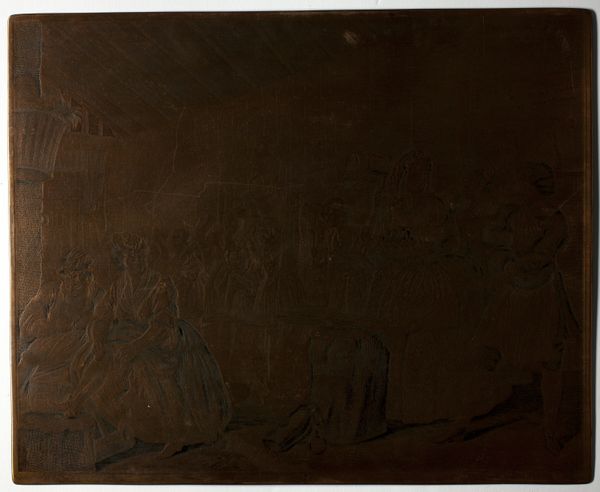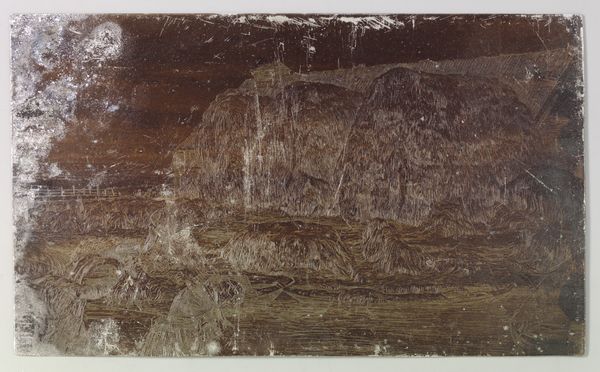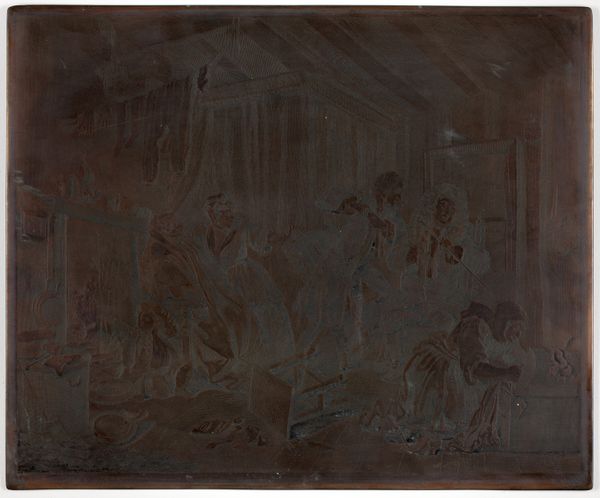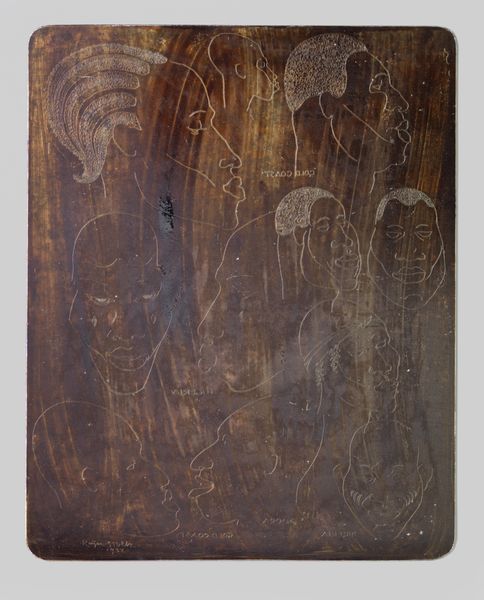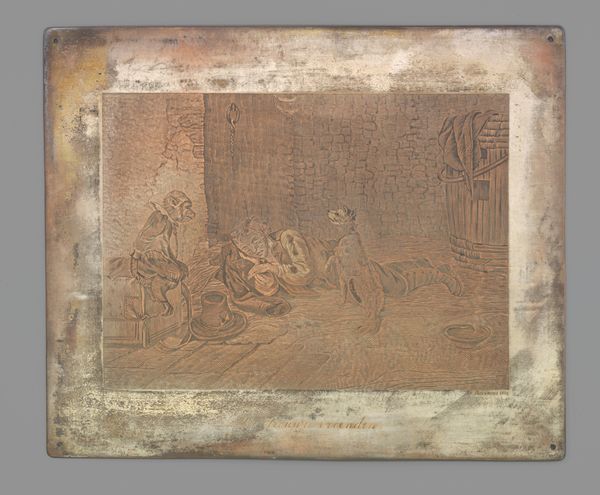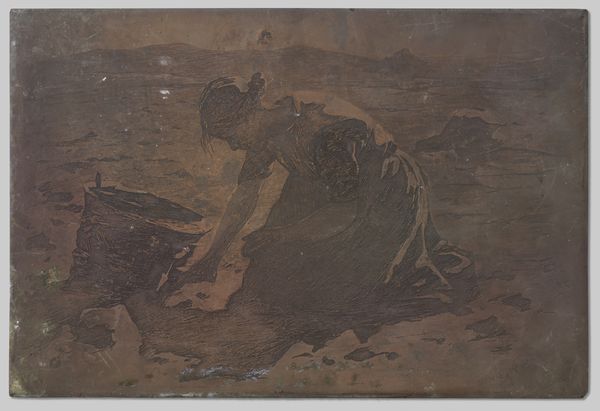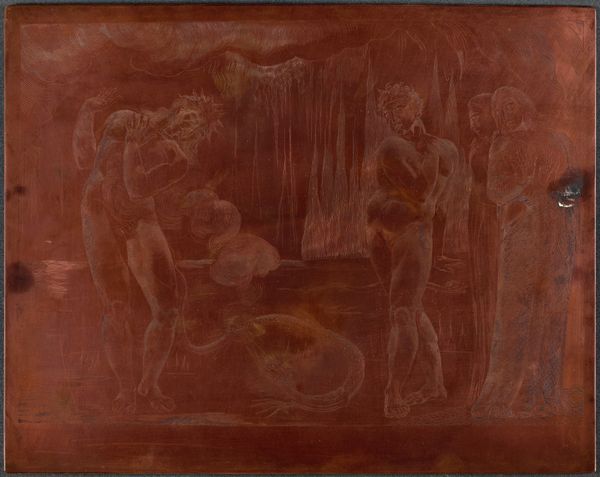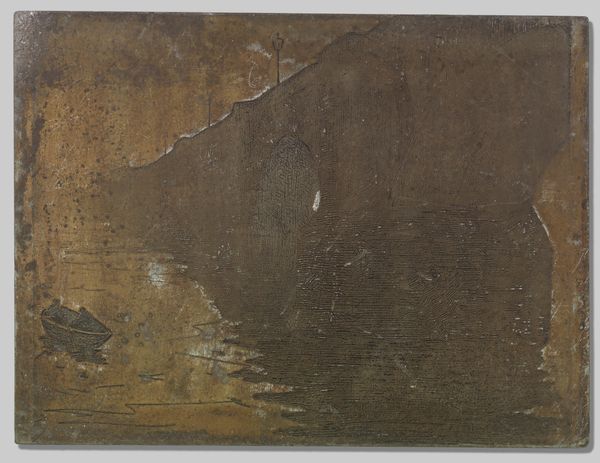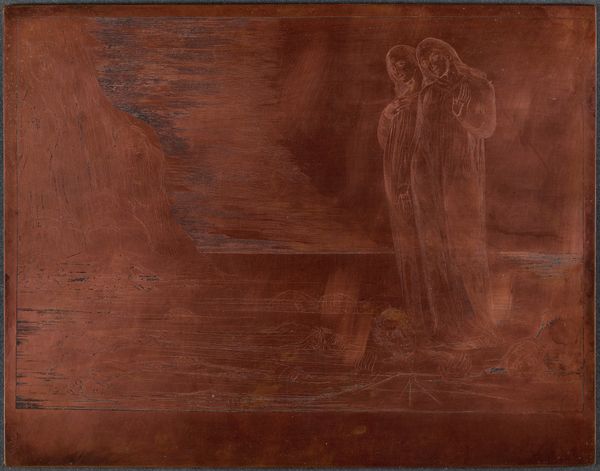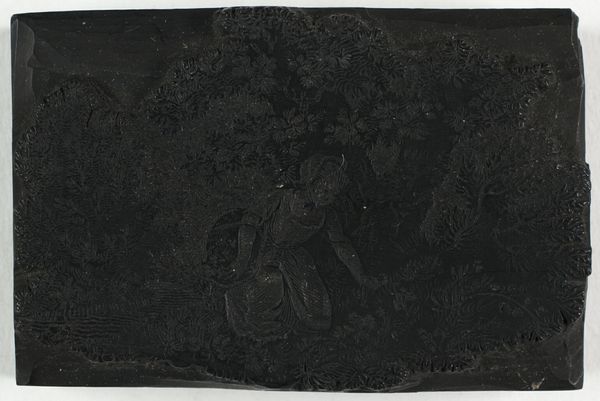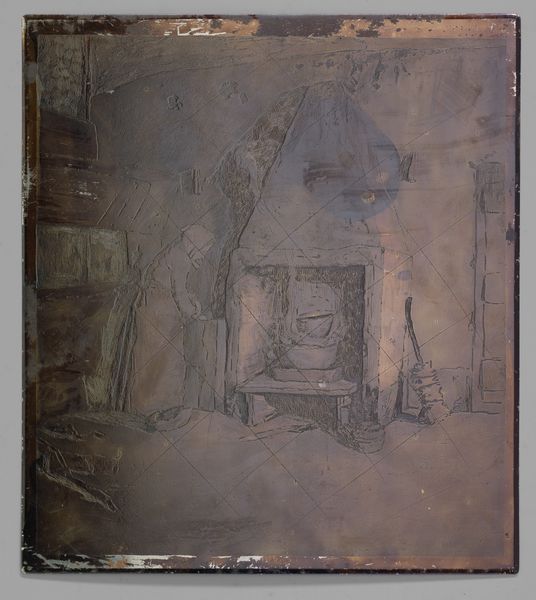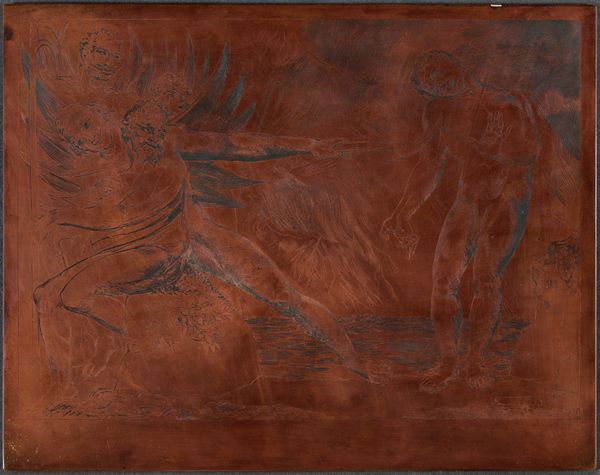
drawing, print, etching
#
drawing
#
narrative-art
# print
#
etching
#
genre-painting
#
history-painting
Dimensions: 315 × 380 mm
Copyright: Public Domain
Curator: Here we have Plate Two from William Hogarth's "A Harlot's Progress", created sometime between 1732 and 1744. It's an etching and engraving, currently residing here at the Art Institute of Chicago. Editor: My first impression is that the piece presents an intimate interior scene, maybe a boudoir, filled with figures posed in an almost theatrical manner. It's quite dramatic, even somber. Curator: Indeed. The entire series chronicles the rise and fall of a young woman named Moll Hackabout. This particular scene shows her as a kept woman. The visual language is dense with meaning. Hogarth was very intentional in what he included; each detail contributes to the larger narrative of social commentary. Notice, for instance, the setting of her room – observe how the visual design represents status. Editor: Formally speaking, the composition uses a deep space created by linear perspective that pushes into the scene to give the main character’s figure and her activity dominance. Notice, however, how it divides into sections, each telling a distinct story, like frames of a comic book. Is that intentional? Curator: I think that the visual layering you’re noticing serves multiple purposes. The prints were initially created for a broad audience; by making it a sequential narrative, it becomes readily accessible. We can discuss that artistic choice as it’s impacted by commerce and the rising merchant class in the 18th century. Hogarth also used engravings because of their reproducibility. So we need to view this artistic output, his method, and his motivations. Editor: It's certainly not static in its interpretation. However, if we look just at Hogarth's handling of the medium, his use of line and shadow creates depth, enhancing the narrative's emotional impact through this chiaroscuro effect. It’s undeniably compelling even if one isn't deeply embedded within his cultural background. Curator: Agreed. Even with this awareness in mind, to me the technical mastery alone cannot supersede what this suggests of artistic value. Editor: Absolutely, although understanding both enhances one’s encounter. Curator: Indeed, these considerations underscore Hogarth's relevance and our insights today.
Comments
No comments
Be the first to comment and join the conversation on the ultimate creative platform.
